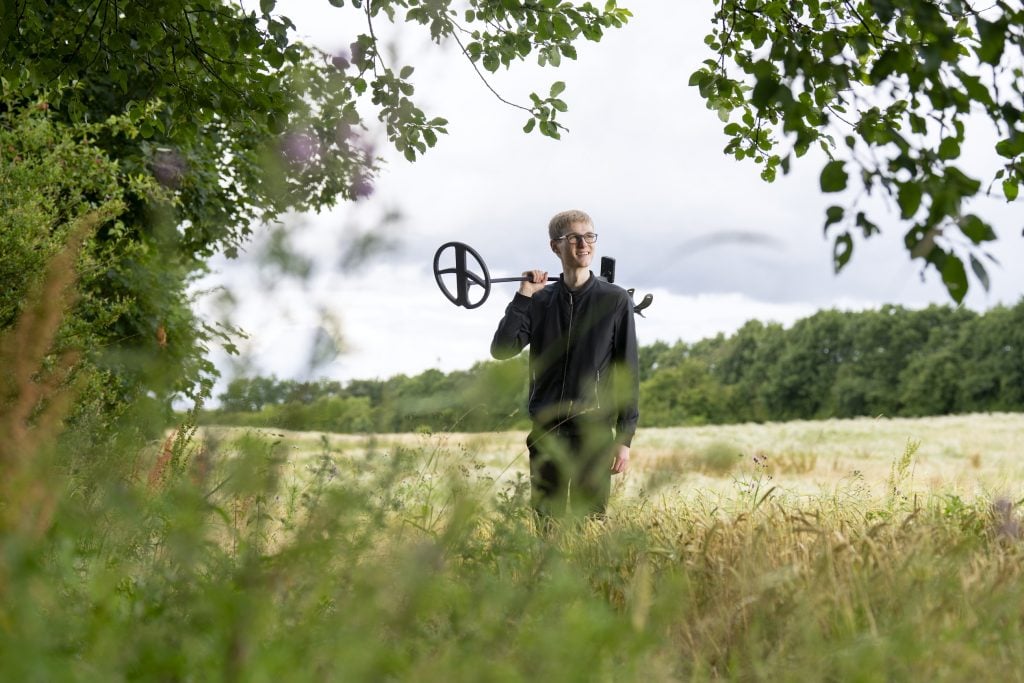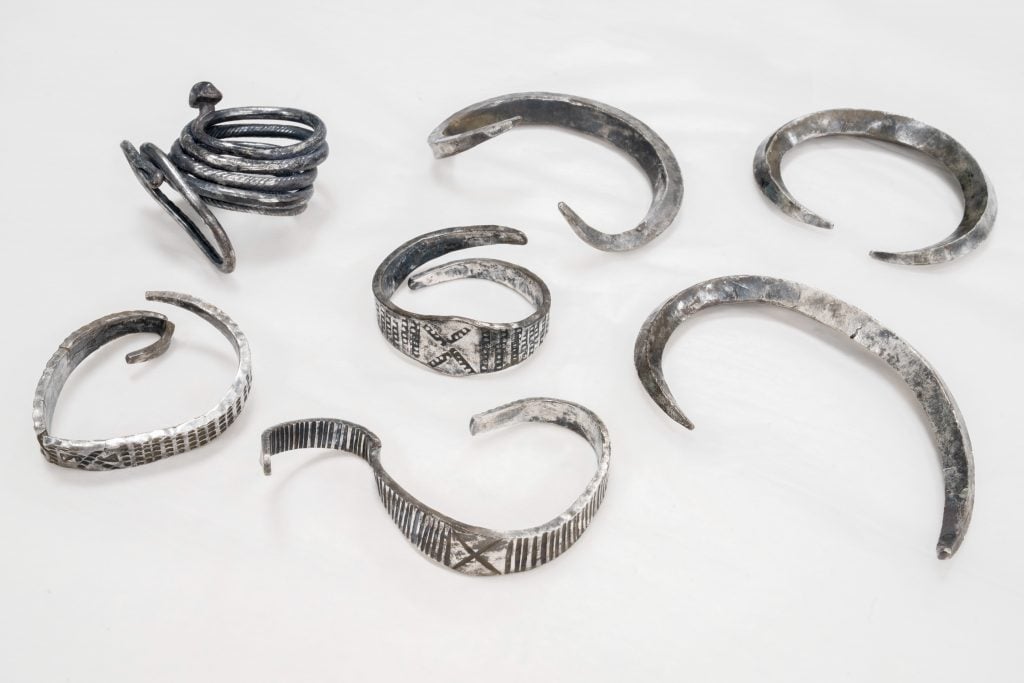Archaeology & History
Archaeology Student Stumbles on a Cache of Danish Viking Silver
The bracelets’ design reflects an expansive trading network linking Danish Vikings to civilizations across the continent.

Gustav Bruunsgaard, a 22-year-old archaeology student from Denmark’s Aarhus University, was walking through the nearby village of Elsted with a metal detector when he stumbled upon a silver bracelet dated to the country’s Viking age. Returning to the same site over the next few days, Bruunsgaard found six more bracelets, which he brought to the nearby Moesgaard Museum for further examination.
Researchers there determined that the bracelets, called bangles, originated from the 9th century C.E., not long after the founding of Aarhus itself. While the researchers don’t know where exactly the bracelets were made, they speculate that their creators lived somewhere in southern Scandinavia, a territory that includes Denmark.
Although known primarily for their weapons and armor, Danish Vikings also wore their fair share of jewelry, which they decorated with engravings of spiritual and mythological significance. Bracelets and necklaces often feature images of Norse gods like Odin, Freya, and Thor.

Silver Viking bracelets from the town of Elsted. Photo: Moesgaard Museum.
The bracelets Bruunsgaard discovered appear to have had a socioeconomic meaning, too. The bracelets were made from the same material as Viking currency, in varying yet consistent sizes, also similar to currency. This means these artifacts may, in addition to demonstrating the owner’s wealth, have functioned as means of payment in and of themselves, as the museum explained.
The multicultural influences evident in the bracelets’ design reflect an expansive trading network that connected Danish Vikings to civilizations across the European continent, from Russia and Ukraine—where this type of jewelry originally comes from—to the shores of Ireland, where they eventually became fashionable. In this case, seafaring Vikings likely acted as mediators, bringing eastern traditions westward by way of their daring voyages.
“The Elsted farm treasure is a fantastically interesting find from the Viking Age, which connects Aarhus with Russia and Ukraine in the east and the British Isles in the west,” said Kasper H. Anderson, a historian at Moesgaard Museum, in a statement. “In this way, the find emphasizes how Aarhus was a central hub in the Viking world, which went all the way from the North Atlantic to Asia.”
Now that they have been examined, the silver bracelets will briefly go on display at the Moesgaard Museum, a regional institution dedicated to the archaeology and ethnography of the Jutland. At a later date, they will be transferred to the National Museum of Denmark in Copenhagen.





